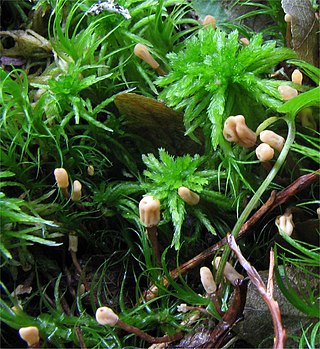Family is one of the eight major hierarchical taxonomic ranks in Linnaean taxonomy. It is classified between order and genus. A family may be divided into subfamilies, which are intermediate ranks between the ranks of family and genus. The official family names are Latin in origin; however, popular names are often used: for example, walnut trees and hickory trees belong to the family Juglandaceae, but that family is commonly referred to as the "walnut family".

Scilla is a genus of about 30 to 80 species of bulb-forming perennial herbaceous plants in the family Asparagaceae, subfamily Scilloideae. Sometimes called the squills in English, they are native to woodlands, subalpine meadows, and seashores throughout Europe, Africa and the Middle East. A few species are also naturalized in Australasia and North America. Their flowers are usually blue, but white, pink, and purple types are known; most flower in early spring, but a few are autumn-flowering. Several Scilla species are valued as ornamental garden plants.

The Canellaceae are a family of flowering plants in the order Canellales. The order includes only one other family, the Winteraceae. Canellaceae is native to the Afrotropical and Neotropical realms. They are small to medium trees, rarely shrubs, evergreen and aromatic. The flowers and fruit are often red.

Species Plantarum is a book by Carl Linnaeus, originally published in 1753, which lists every species of plant known at the time, classified into genera. It is the first work to consistently apply binomial names and was the starting point for the naming of plants.

Nerine is a genus of flowering plants belonging to the family Amaryllidaceae, subfamily Amaryllidoideae. They are bulbous perennials, some evergreen, associated with rocky and arid habitats. They bear spherical umbels of lily-like flowers in shades from white through pink to crimson. In the case of deciduous species, the flowers may appear on naked stems before the leaves develop. Native to South Africa, there are about 20–30 species in the genus. Though described as lilies, they are not significantly related to the true lilies (Liliaceae), but more closely resemble their relatives, Amaryllis and Lycoris. The genus was established by the Revd. William Herbert in 1820.

Carl Ernst Otto Kuntze was a German botanist.

The history of plant systematics—the biological classification of plants—stretches from the work of ancient Greek to modern evolutionary biologists. As a field of science, plant systematics came into being only slowly, early plant lore usually being treated as part of the study of medicine. Later, classification and description was driven by natural history and natural theology. Until the advent of the theory of evolution, nearly all classification was based on the scala naturae. The professionalization of botany in the 18th and 19th century marked a shift toward more holistic classification methods, eventually based on evolutionary relationships.

Baeckea is a genus of flowering plants in the myrtle family, Myrtaceae, all but one endemic to Australia. Plants in the genus Baeckea are shrubs or small trees with leaves arranged in opposite pairs, white to deep pink flowers with five sepals and five petals, and five to fifteen stamens that are shorter than the petals.

Mertensia virginica is a spring ephemeral plant in the Boraginaceae (borage) family with bell-shaped sky-blue flowers, native to eastern North America.

Chaenostoma cordatum, also known as sutera cordata, bacopa cordata, sutera diffusus, or bacopa, is one of 52 species in the genus Chaenostoma (Scrophulariaceae), and is native to South Africa.

Olof Peter Swartz was a Swedish botanist and taxonomist. He is best known for his taxonomic work and studies into pteridophytes.

Isotoma is a genus of annual and perennial herbs in the family Campanulaceae and are native to Australia and New Zealand.

Blasiales is an order of liverworts with a single living family and two species. The order has traditionally been classified among the Metzgeriales, but molecular cladistics suggests a placement at the base of the Marchantiopsida.
Apotreubia is a genus of liverworts in the family Treubiaceae. There are four species, including: Apotreubia nana, which is found in subalpine New Guinea, and Apotreubia pusilla, which has a disjunct distribution between eastern Asia and British Columbia.

Heyderia is a genus of fungi in the family Hemiphacidiaceae. The genus contains six species.

Genera Plantarum is a publication of Swedish naturalist Carl Linnaeus (1707–1778). The first edition was issued in Leiden, 1737. The fifth edition served as a complementary volume to Species Plantarum (1753). Article 13 of the International Code of Nomenclature for algae, fungi, and plants states that "Generic names that appear in Linnaeus' Species Plantarum ed. 1 (1753) and ed. 2 (1762–63) are associated with the first subsequent description given under those names in Linnaeus' Genera Plantarum ed. 5 (1754) and ed. 6 (1764)." This defines the starting point for nomenclature of most groups of plants.

Lipandra polysperma, common name manyseed goosefoot, is the only species of the monotypic plant genus Lipandra from the subfamily Chenopodioideae of the family Amaranthaceae.

Giovanni Antonio Maria Zanardini was an Italian physician and botanist who specialized in the field of phycology.
















